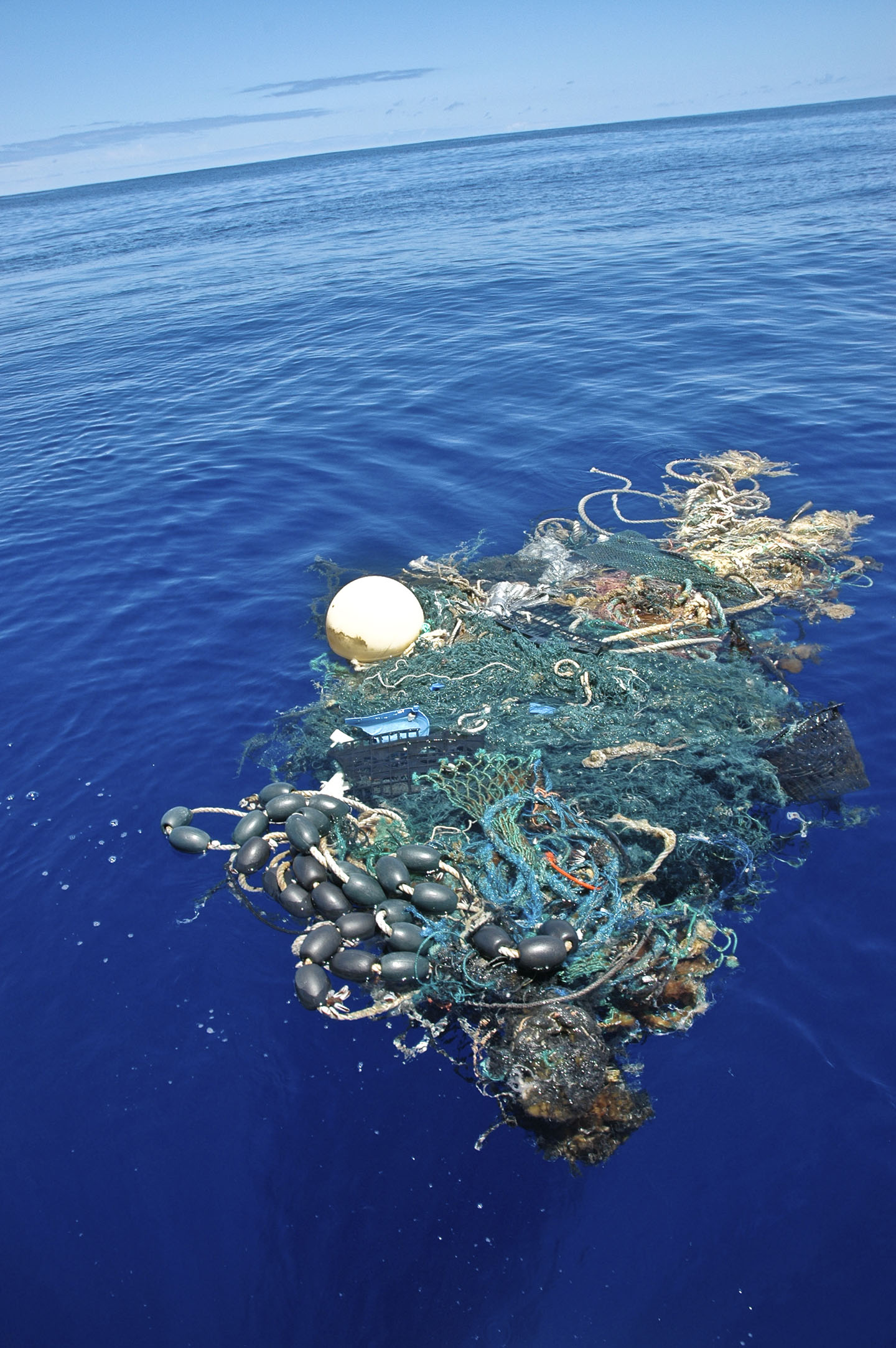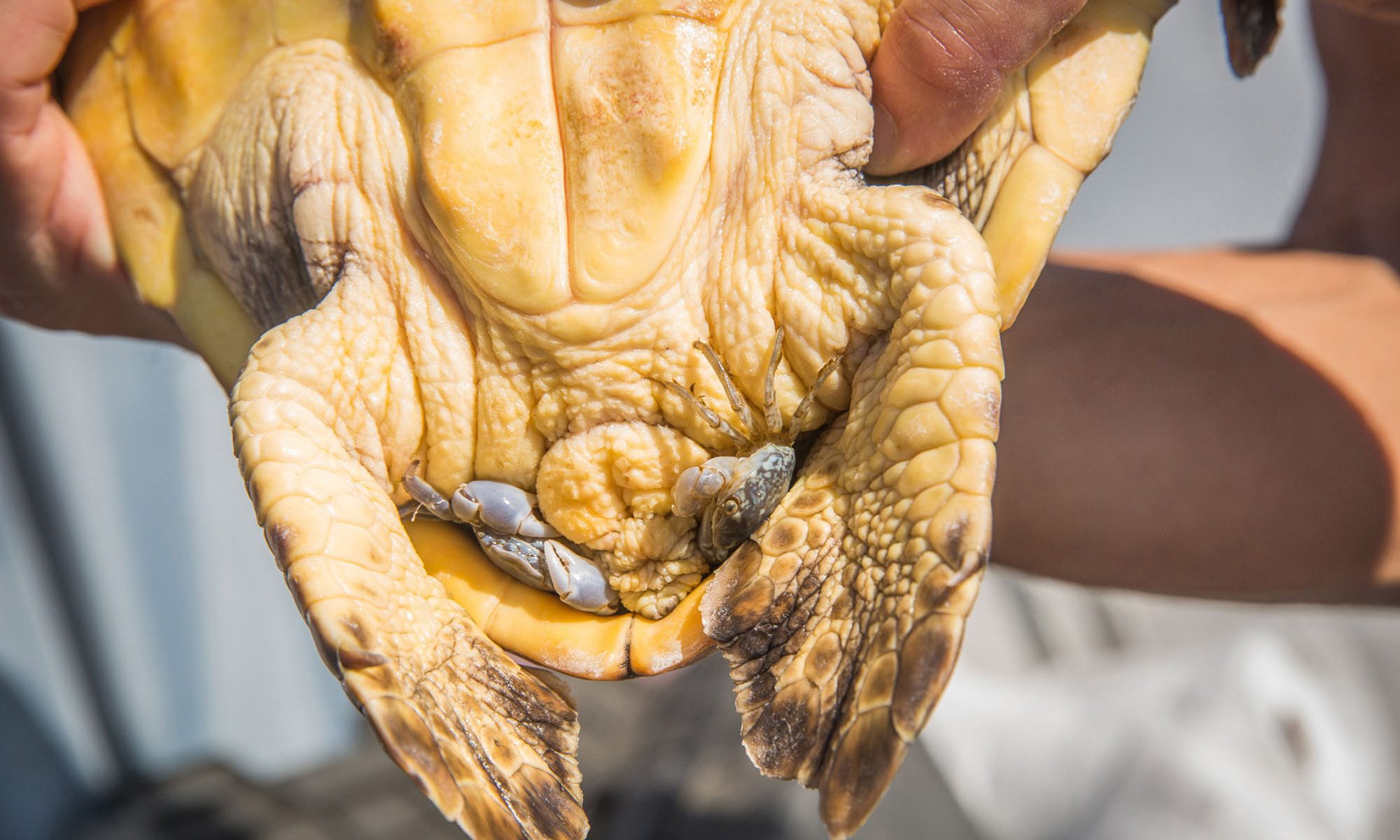I’m a commensalist. What’s your sign?
Oceanic crabs find love in strange places, including in the pocket above a sea turtle’s tail and on floating plastic debris. Joseph Pfaller PhD ’16 and Michael Gil PhD ’15 have led several complementary projects that culminated in an intriguing finding: crabs exhibit different mating behavior when living tucked below the carapace of a loggerhead turtle than in a nest of plastic. Pfaller and Gil’s findings provide support for a new ecological model of symbiosis – when different species live together – that incorporates spatial factors.
Oceanic crabs (Planes minutus) are weak swimmers, yet live far from shore. They must seek shelter for mating, feeding, and long-distance travel.
Loggerhead turtles (Caretta caretta), which have a worldwide range, provide an appropriate host for the crabs. The crabs do not harm the turtle, but the turtle does not benefit from their presence. This type of symbiotic relationship is called commensalism; however, not all P. minutus are commensalists.
What’s remarkable about the arrangement is that when it occurs, the crabs adopt a particular mating behavior – monogamy. Because the pocket above the turtle’s tail is small, mating pairs of crabs can monopolize this refuge space and, thus, the rest of the turtle’s body. Since this private island home provides ample mating and feeding opportunities, risking life and limb to leave such a posh setup to seek other mates becomes less desirable.
“Humans affect ecosystems that we, as a society, have come to rely heavily upon. I think this is among the most pressing research topics of our time.”
The discovery gives insight into the evolution of biomes, the collection of organisms bound by a common physical place. If that physical place is part of a larger organism, such as a turtle’s body, it’s an “epibiome,” or “biome on top of a biome.” In the epibiome, what different relationships emerge between species? Typically, symbiosis, which most people learned from college biology classes, is a close interaction of two different creatures’ behavior and growth.
An ecological relationship in which one species relies upon the other is called obligate symbiosis. However, Pfaller notes that because the crabs aren’t entirely reliant upon their “roomie,” this relationship could be considered facultative, not obligate. Facultative symbiosis is an intermediate step between living alone and living an obligate lifestyle, and “might lead to the evolution of obligate symbiosis,” he explains.
Pfaller and Gil published a paper in the Sept. 21, 2016 issue of Biology Letters using data on sea turtles from Pfaller’s and others’ previous research to compare the occurrence of male–female crab pairs in loggerheads’ carapace pockets with that of other biomes, in particular, the Great Pacific Garbage Patch. As the name suggests, it is a massive collection of oceanic debris, comprising mostly plastic items, and is perhaps as vast as 270,000 square miles, swirling in the North Pacific Subtropical Gyre. “Think inverted whirlpool,” says Gil.
The Garbage Patch also provides refuge for a number of creatures. The paper analyzes data collected for a 2012 project with the Sea Education Association, in which Gil traveled the Pacific aboard the SSV Robert C. Seamans from San Diego to Honolulu on a course through the center of the North Pacific Subtropical Gyre. “To sample plastic debris that crossed our path, we would bring the debris on board,” says Gil. “I would carefully count and remove all organisms, including crabs, from the plastic surface using chisels.”
 The Great Pacific Garbage Patch comprises clumps of floating debris, mostly plastics.
The Great Pacific Garbage Patch comprises clumps of floating debris, mostly plastics.“Think inverted whirlpool.”
Although the Garbage Patch is not the cohesive mass of plastic one might imagine, the role of floating plastic debris cannot be understated. Gil’s research, published in Scientific Reports on Jan. 27, 2016, focused on the barnacle colonies that grew on the debris, and his findings from the barnacle study further confirm that some species’ physiology affects the spatial relations, and indirectly, another species’ behavior. “Anatomy is the key,” agrees Pfaller. The barnacles provide structural integrity and refuge areas.
When those areas are of similar size, and therefore defensibility, to the pocket above a turtle’s tail, crabs exhibit the same monogamous behavior as they do on loggerheads. This pattern suggests that crabs may better use their energy to pursue multiple mating partners if they’re in an amorphous biome rather than defending refuge. Defending the small pocket of the turtle – the epibiome – is considerably easier, so the pursuit of multiple partners isn’t worth losing the refuge.
Pfaller and Gil’s work supports the expansion of ecological theory to address “what we don’t know about, which is the ecological characteristics that drive mating strategies,” says Pfaller. “Our findings suggest that symbiosis could drive the evolution of specific mating strategies in animals,” says Gil.
Moreover, both projects highlight the complex effects of human activity on wildlife behavior, says Gil. While humans’ relationship to the environment may take many forms, it’s not always commensalist: “Humans affect ecosystems that we, as a society, have come to rely heavily upon,” he says. “I think this is among the most pressing research topics of our time.” Before his barnacle research, Gil studied a different type of oceanic pollution: runoff. His dissertation examined nutrient pollution in coral reefs. Runoff from farms and septic tanks, as well as combustion emissions, releases excessive nitrogen and phosphorus into aquatic environments. Much like when you don’t clean your fish tank, algae blooms and, in the ocean, saps coral reefs.
Pfaller says the crabs project is an extension of his lifelong interest in sea turtle research. When he was a teenager, he began volunteering with the Caretta Research Project. The Savannah, Ga.-based endeavor, now in its 45th year, is “one of the longest-running sea turtle research projects in the world,” says Pfaller. His 19 years with Caretta as volunteer and eventual intern have culminated in his current role as research director of the project. “I’ve been a biologist since I could walk,” he says. “There’s really no other job path that I ever could imagine.”
About the Researchers
See also: Makin’ Waves: Mike Gil Named TED Fellow
